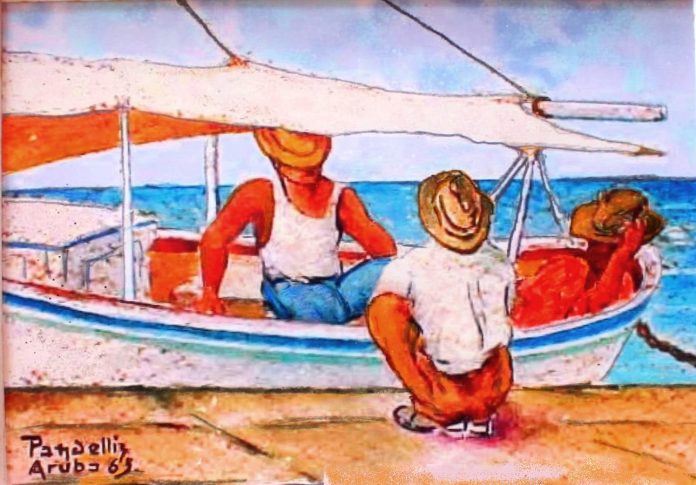Etnia Nativa through Island Insight shares our native cultural awareness, educates and safeguarding Aruba’s heritage by elevating each reader into an island keeper state of mind. Be encouraged to discover in every episode the true native effect, live it, discover more reasons to love Aruba and live up your island adventure in an authentic revealing way.
Our island is a tiny tourist destination with a fragile ecosystem, covering thousands of years of history. Here is when Etnia Nativa’s main objective comes to mind, sharing information through education.
If you’re a history and culture buff, there’s no shortage of places on our island to visit. Whether you want to go searching for the Gold Mines, witness the “Dera Gai” Festivals, visit Alto Vista, Church at Noord or the California Light House, our ancient rock art sites. Also you can discover historical architecture in the Oranjestad and the Past Monuments and get your culture fix when you uncover Island Insight.
In this episode we explain how Aruba’s picturesque landscape has made a lasting impression on visiting artists in particular Johannes Pandellis, a Greek painter who influenced many locals.His works remanisens of how Aruba was in a time gone bye. Water colurs of nostalgic, peace full and historic moments. How the island was it’s inspiered a vibrant, longstanding artist community where from all around the world have followed pigmenting mythical views, graffiti, and more onto city walls.
Talking about “Dutch” Caribbean art in the 20th century’, it is obvious that we cannot mention all those who participated and contributed with their love, passion and talentfull expressionism, marked by exuberance, rebelliousness, impulses and emotions related to the artist’s temperament.
The expressionist miscegenation of the Dutch Caribbean combines realism and surrealism, alternating and adding abstraction and figuration, according to the individual options of an artistic expression in constant renewal, in the mid-1940s or post WWII, a particular style began to emerge despite the various shared roots, they made contemporary Aruban art constantly adapt to positive changes. However, Aruba’s indigenous heritage and heritage legacy maintained its strong aesthetic values.
In the pictorial works of this particular Greek artist: Johannes Pandellis we can see that strong heritage legacy of our island. Johannes Pandellis (1896-1965) who went first to Suriname during the First World War and then left for Curacao in 1929, was one of the earliest artists working and art teacher in the region, from who`s many works are still very valued by collectors in auctions.
Through biobliographies and documentation of the time we learned that Johannes Pandellis taught art classes on our island at “Lago Colony”. We also know that he was married to a woman of Indonesian origin and that the couple had a daughter named Lislotte who worked in Fanny’s shop in town.Several residents of Lago Colony during that time took art classes with him and many are the ones who surprise us so far by telling us certain anecdotes as well as that they still have paintings by Johannes on the walls of their homes.
The artistic works of Johannes Pandellis show the splendor of the Caribbean Sea framing the background in addition to the indescribable and emblematic “pastel” tones that characterize his works.Some of his paintings was seen hanging on a wall in the hall of the Colony Service Administration building. The stories told from generation to generation tell us that several health professionals who at that time worked at the Lago Colony hospital took art classes from Johannes Pandellis and even that one of them Dr. Stritch, an outstanding professional at the Lago Hospital He abandoned his medical practice and became a full-time painter. Several of his paintings were sold to residents of the colony. For a time there were annual art shows at the Esso Club.
If you love Aruba we encourage you to do something different and outside the tourist grid. Become one of the exclusive visitors of Etnia Nativa where you will be able to admire collections of native art, archaeological artifacts and historical furniture while the installation itself is the result of the transformation and recycling of materials.
Since 1994, Etnia Nativa, which is a private residence and home of our columnist/artist, Anthony Croes, sharing with tourism an authentic view of Aruba. Anthony guides each guest step by step during the visit so take some time away from the beach scene, book your visit and feel the native effect! R.S.V.P. etnianativa03@gmail.com or whatsapp + 297 592 2702.
















